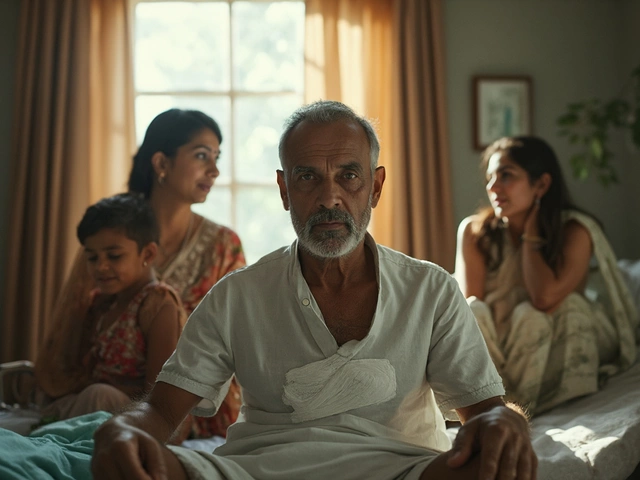Heart Transplant Cost Calculator
Estimated Costs
Total Cost: $0
Out-of-Pocket Cost: $0
Cost Breakdown
The most expensive surgery in the world isn’t a complicated bone realignment or a high-tech robotic procedure. It’s a heart transplant. On average, this single operation costs between $1.4 million and $1.7 million in the United States. That’s more than most people make in a lifetime. And it’s not just the surgery itself - it’s everything that comes before and after.
Why a Heart Transplant Costs So Much
A heart transplant isn’t just cutting open a chest and swapping out a failing organ. It’s a multi-month, multi-team process that starts long before the patient even gets on the operating table. First, there’s the evaluation. Patients go through months of tests - blood work, imaging, psychological reviews, and social support checks. Not everyone qualifies. Only about 1 in 5 people on the waiting list ever get a donor heart.Then there’s the donor. Finding a matching heart is rare. Less than 4,000 donor hearts become available in the U.S. each year. The organ must be transported within hours, often by private air ambulance. The logistics alone can cost $50,000 or more.
The surgery itself takes 4 to 8 hours. It involves a team of 15 to 20 specialists: cardiac surgeons, anesthesiologists, perfusionists, nurses, and transplant coordinators. Every minute in the OR is expensive. The hospital charges $10,000 to $15,000 just for the operating room per hour.
What Happens After the Surgery
The surgery is only half the battle. After the transplant, patients stay in the hospital for 2 to 4 weeks. Then comes lifelong care. You need immunosuppressant drugs - drugs that keep your body from rejecting the new heart. These aren’t cheap. A single month’s supply can cost $2,500 to $5,000. That’s $30,000 to $60,000 a year, forever.Patients also need regular biopsies to check for rejection. These aren’t simple blood tests. Doctors take tiny tissue samples from the heart through a catheter. Each biopsy costs $5,000 to $8,000 and must be done several times a year, especially in the first year. Add in monthly lab tests, specialist visits, and emergency care, and the annual cost stays above $100,000 for life.
How It Compares to Other Expensive Surgeries
Some people think complex orthopedic surgeries - like full spine reconstructions or multi-joint replacements - are the costliest. Those can run $200,000 to $300,000. Liver transplants? Around $800,000. Lung transplants? $1.2 million. But none of them match the heart transplant’s total lifetime cost.Why? Because the heart doesn’t just need replacement - it needs constant monitoring. Unlike a knee implant, which lasts 15 to 20 years, a transplanted heart can fail due to rejection, infection, or coronary artery disease in the new organ. About 50% of heart transplant recipients need another intervention within 10 years. Some need a second transplant.
Compare that to a hip replacement. Once it’s in, you’re mostly done. You might need physical therapy, but you won’t need lifelong drugs that cost $50,000 a year.

Who Pays for It?
Most patients rely on Medicare, Medicaid, or private insurance. But even with coverage, out-of-pocket costs can hit $50,000 to $100,000. That’s before factoring in travel, housing near the hospital, lost wages, and caregiving expenses. Many families sell homes or take out second mortgages.Some turn to medical tourism. Countries like India, Thailand, and Mexico offer heart transplants for $200,000 to $400,000. But those come with risks: inconsistent follow-up care, language barriers, and no guarantee the donor heart was screened properly. The mortality rate for transplants done abroad can be 2 to 3 times higher than in top U.S. centers.
What’s Inside the Price Tag?
Here’s a breakdown of where the money goes in a typical heart transplant:- Donor organ acquisition and transport: $100,000-$150,000
- Surgical team and operating room: $300,000-$500,000
- Hospital stay (ICU and ward): $200,000-$350,000
- Immunosuppressant drugs (first year): $100,000-$150,000
- Biopsies and monitoring tests (first year): $80,000-$120,000
- Follow-up visits and imaging: $50,000-$80,000
- Rehabilitation and therapy: $20,000-$40,000
That’s $900,000 to $1.4 million just in the first year. And that’s before the next decade of care.

Survival Rates and Value
It sounds extreme - spending over a million dollars on one surgery. But the results speak for themselves. About 90% of patients survive the first year. After five years, nearly 75% are still alive. Many return to work, travel, and even have children. A 2023 study from the International Society for Heart and Lung Transplantation found that heart transplant recipients live, on average, 14 years longer than those who stay on mechanical support devices.That’s not just a medical win. It’s a financial one too. A person who lives 14 more years can earn income, pay taxes, and contribute to society. The cost of keeping someone alive with a ventricular assist device (VAD) for the same time period can exceed $2 million - and doesn’t offer the same quality of life.
What’s Changing?
New technologies are starting to chip away at the cost. Artificial hearts are improving. Some newer immunosuppressants are cheaper and more effective. Telehealth lets doctors monitor patients remotely, cutting down on office visits.But the biggest shift might be in organ preservation. Scientists are now using machines that can keep donor hearts beating outside the body for up to 24 hours. That means organs can be shipped farther, matched better, and used more efficiently. Early data shows this could reduce waste and lower costs by 15% to 20% over the next five years.
Is It Worth It?
For the right patient, yes. A heart transplant isn’t just about extending life - it’s about restoring it. People who get transplants often say they feel like they’ve been given back their childhood. They can walk up stairs without stopping. They can hug their grandchildren without getting winded. They can sleep through the night.That’s not something you can put a price on. But if you’re facing this decision, you need to know what you’re signing up for. It’s not just a surgery. It’s a lifelong commitment - to medicine, to monitoring, to taking pills every day, to never taking your new heart for granted.
What is the most expensive surgery in the world?
The most expensive surgery is a heart transplant, with total costs ranging from $1.4 million to $1.7 million in the United States. This includes the surgery, donor organ, hospital stay, lifelong immunosuppressant drugs, and ongoing medical monitoring. No other procedure comes close to this lifetime cost.
Why are heart transplants more expensive than liver or lung transplants?
Heart transplants cost more because they require lifelong, high-cost immunosuppressant drugs and frequent biopsies to prevent rejection. While liver and lung transplants are also expensive, heart recipients need more intensive, continuous monitoring. A failing heart can’t be supported long-term with machines the way a failing liver or lung can - making the transplant not just a procedure, but a permanent medical commitment.
Can you get a heart transplant for less money outside the U.S.?
Yes, countries like India, Mexico, and Thailand offer heart transplants for $200,000 to $400,000. But the risks are higher. Follow-up care is often inconsistent, donor screening may be less strict, and complication rates are significantly higher. Many patients end up returning to the U.S. for emergency care, which ends up costing more than the original savings.
How long do heart transplant patients live after surgery?
About 90% of patients survive the first year. After five years, 75% are still alive. On average, heart transplant recipients live 14 years longer than they would with mechanical support devices. Some live 20 years or more with proper care and adherence to medication.
Are there alternatives to a heart transplant?
Yes. Ventricular assist devices (VADs) can support heart function for years and are often used as a bridge to transplant. Newer VADs are small enough to be implanted without open-heart surgery. Some patients with advanced heart failure live for decades on VADs. But VADs don’t cure heart failure - they manage it. They also carry risks of infection, stroke, and device failure, and cost over $2 million over 10 years.

 Heart Surgery: What Is the Number One Most Painful Procedure?
Heart Surgery: What Is the Number One Most Painful Procedure?
 Can You Really Get Wegovy for $25?
Can You Really Get Wegovy for $25?
 Best Countries for Surgery in 2025: Costs, Safety, and How to Choose
Best Countries for Surgery in 2025: Costs, Safety, and How to Choose
 Best Herbal Supplement Company: How to Choose Wisely
Best Herbal Supplement Company: How to Choose Wisely
 Unusual Behaviors Post-Heart Surgery: Understanding the Causes
Unusual Behaviors Post-Heart Surgery: Understanding the Causes